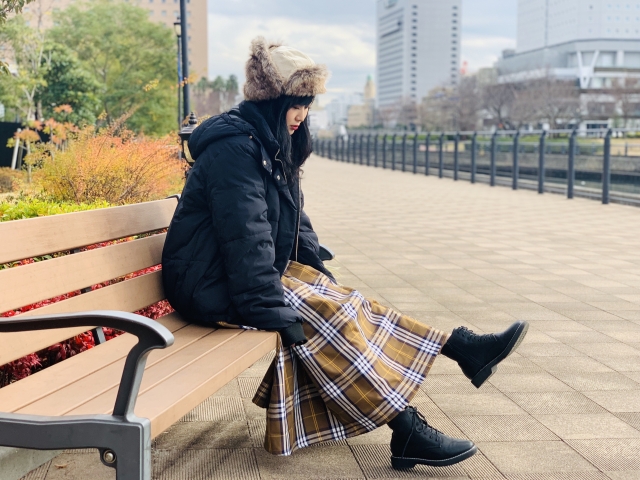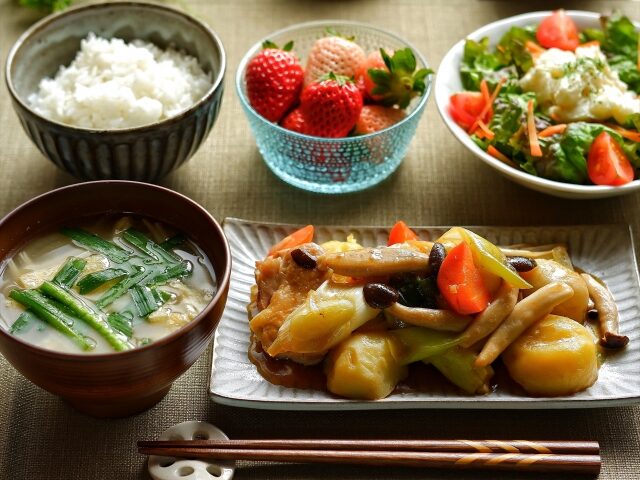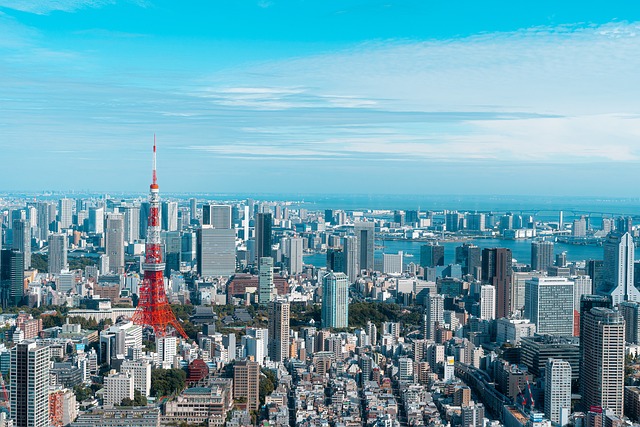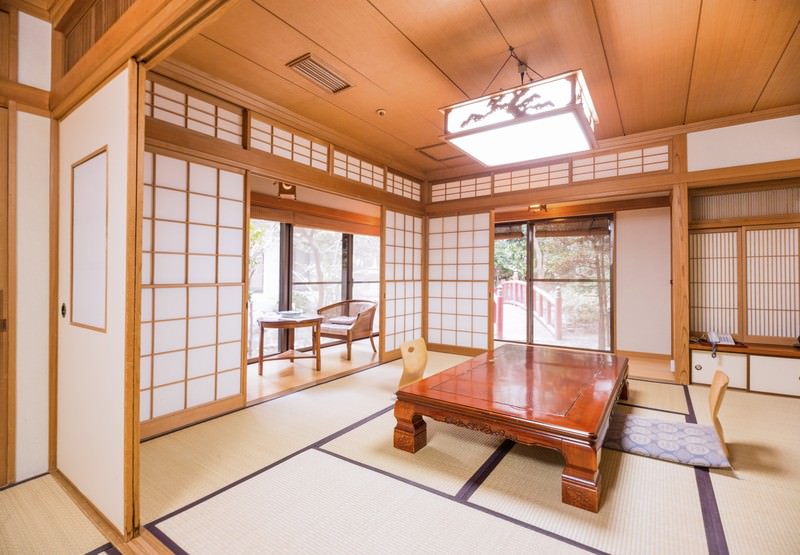
प्रस्तावना — आत्मीय संदेश
आदरणीय पापा‑मम्मी जी, जापान यात्रा की तैयारियाँ अब वास्तव में हो गई हैं। यह आपकी पहली विदेश यात्रा है, इसलिए मन में स्वाभाविक‑सी चिंताएँ होंगी, किंतु निश्चिन्त रहिए—मैं हर चरण में आपके साथ रहूँगा।जब आप पहली बार विदेश यात्रा पर निकलते हैं, तो मन में यह चिंता होना स्वाभाविक है कि “अगर कुछ भूल गए तो क्या होगा?”—और हम ज़रूरत से कहीं ज़्यादा सामान ले जाते हैं।
लेकिन जापान बड़ा ही सुविधाजनक देश है जहाँ लगभग हर ज़रूरी चीज़ आसानी से मिल जाती है; इसलिए कुछ भूल भी जाएँ, तो कोई बड़ी समस्या नहीं होगी।
कम‑से‑कम सामान के साथ आइए—हल्का सफ़र, आरामदायक सफ़र ही सही।
तो चलिए, मिलकर तैयारियाँ शुरू करें!
English
Dearest Mom and Dad, it is time to begin packing for Japan. Because this is your first overseas trip it is natural to feel a little anxious, but please relax—I will be with you at every step. On your first trip abroad it’s natural to ask, “What if I forget something?”—and to pack far more than you need.
Yet Japan is wonderfully convenient; you can buy almost anything after you arrive, so forgetting an item is no big deal.
Travel light for a smoother, more comfortable journey.
Now, let’s start getting ready together!
१. कपड़ों के बारे में
मौसम के अनुसार कपड़े पैक कीजिए। इमारतों में एयर‑कंडीशनिंग तेज हो सकती है, इसलिए साल‑भर एक हल्का जैकेट या कार्डिगन काम आएगा। आप काफी पैदल चलेंगे, इसलिए आरामदेह और पहने‑पसंद जूते ज़रूरी हैं। अचानक बारिश के लिए फोल्डिंग छाता उपयोगी रहेगा; भारत में शायद आप इसे कम ही इस्तेमाल करते हों, इसलिए ज़रूरत पड़ने पर जापान पहुँचकर इसे आसानी से ख़रीद सकते हैं।
जापान, भारत की तरह, लंबाई‑चौड़ाई में बड़ा देश है; इसलिए तापमान जगह‑जगह और मौसम के साथ बहुत बदलता है। सबसे सुखद मौसम वसंत (अप्रैल‑मई) और पतझड़ (अक्टूबर‑नवंबर) होता है—तापमान 15‑25 ° C के बीच और नमी कम रहती है। वसंत में चेरी‑ब्लॉसम, पतझड़ में रंग‑बिरखे पत्तों का आनंद मिलता है।
वसंत / पतझड़
हल्की आधी या पूरी बाँह की टी‑शर्ट पर कार्डिगन या जैकेट पहनें। हल्का भारतीय स्कार्फ तापमान समायोजित करने में मदद करता है। शाम को ठंड बढ़ सकती है, इसलिए उतार‑पहन सकने वाली अतिरिक्त परत रखें। ठंड से जल्दी प्रभावित होते हों तो पतला स्वेटर या कोट भी साथ रखें।भारत में रोज़ पहनी जाने वाली सैंडलें जापान के मौसम में पर्याप्त गरम नहीं होंगी; इसलिए आरामदेह स्नीकर्स या अन्य चलने‑फिरने वाले जूते साथ लाएँ, या ज़रूरत हो तो जापान पहुँचकर ख़रीद लें।

गर्मी (जुलाई‑सितंबर)
उहाल के वर्षों में जलवायु परिवर्तन के कारण गर्मी (जुलाई‑सितंबर) पहले से कहीं ज़्यादा उमस भरी और तीखी हो गई है; तापमान कभी‑कभी 40 डिग्री से. तक पहुँच जाता है। ऐसे में हल्के, सांस लें वाले सूती कपड़े पहनें—पूरी बाँहें चिपचिपी लगेंगी—और室के भीतर की ठंडी ए‑सी के लिए एक पतली परत साथ रखें। धूप से बचाव के लिए टोपी और सन‑ग्लास अनिवार्य हैं। भारत की गर्मियों के अभ्यस्त लोग भी जापान की ऐसी उमस को बोझिल पा सकते हैं (हालाँकि मेरे पति तो उस समय भी बिल्कुल सहज रहते हैं जब मैं पसीने से तर हो रही होती हूँ, इसलिए हो सकता है आपको भी उतनी दिक्कत न हो!)। यहाँ लोग चिलचिलाती गर्मी से निपटने के लिए सन‑पारासोल, यू‑वी आर्म‑कवर, जेब में रखे जा सकने वाले छोटे फैन और कूलिंग तौलियों का सहारा लेते हैं।

Summer sun‑protection essentials
सर्दी (दिसंबर‑फरवरी)
में ठंड कड़ाके की होती है—टोक्यो में भी तापमान 0 से 10 °C के बीच रहता है, और उससे उत्तर के इलाक़ों में पारा शून्य से नीचे चला जाता है और बर्फ़ पड़ना आम है। डाउन कोट, स्वेटर, मफ़लर, दस्ताने और हीट‑टेक® जैसी गरम अंतर्वस्त्रियाँ अनिवार्य हैं। अगर इतने भारी सर्दी‑कपड़े आपके पास नहीं हैं, तो चिंता न करें; अक्सर जापान पहुँचकर (उदाहरण के लिए Uniqlo जैसी दुकानों से) अच्छी क्वालिटी का सर्दी‑सामान खरीद लेना आसान और किफ़ायती पड़ता है। ओकिनावा इस नियम का अपवाद है—वहाँ सर्दियाँ भी सुहानी रहती हैं, इसलिए भारी कपड़ों की ज़रूरत नहीं पड़ती।

English
Clothing
Pack for the season. A light jacket or cardigan is useful year‑round because indoor AC can be chilly. You’ll do plenty of walking, so bring comfortable broken‑in shoes. A folding umbrella is handy for sudden showers, but since you probably don’t use one in India you can simply buy one in Japan if it turns out you need it.
Japan’s climate varies widely with region and season. The most pleasant times to visit are spring (March–May) and autumn (October–November), when temperatures sit around 15–25 °C with modest humidity. Spring brings cherry blossoms; autumn, brilliant foliage.
Spring & Autumn (March-Early May, October-November)
Light short‑ or long‑sleeved tops plus a cardigan or jacket you can slip on. A thin Indian scarf is perfect for quick temperature swings. Evenings cool fast, so an extra layer is handy. If you feel the cold easily, pack a thin sweater or coat. Sandals that work fine in India may feel too cold in Japan; pack sneakers or other comfortable walking shoes, or simply buy a pair after you arrive.
Summer (July–September)
Summer has grown noticeably hotter and more humid in recent years because of climate change, with temperatures sometimes pushing 40 °C. Wear light, breathable cotton—long sleeves will feel sticky—and keep a thin layer handy for the strong indoor AC. A hat and sunglasses are essential for sun protection. Even if you’re used to India’s summers, Japan’s muggy heat can still feel oppressive (although, for example, my husband stays perfectly comfortable while I’m dripping with sweat, so you might manage just fine!). Locals fight the scorching heat with parasols, UV arm sleeves, pocket‑size fans and cooling towels.
Winter (December–February)
Winter can be brutally cold—even in Tokyo the temperature hovers around 0‑10 °C, and farther north it often drops below freezing and brings snow. Pack—or plan to buy—a down coat, sweater, muffler, gloves and Heat‑Tech® thermal layers. If you don’t already own heavy winter gear, it’s often easier (and cheaper) to pick some up in Japan at stores like Uniqlo. Okinawa is the exception; its winters stay mild, so heavy clothing isn’t necessary there.
२. बिजली और संचार की तैयारी
दुनिया भर में बिजली के प्लग अलग‑अलग होते हैं—नीचे दिया चार्ट देखकर फ़र्क़ साफ़ समझ आएगा। भारत में आम तौर पर B3, BF, B या C टाइप (220–240 V) प्लग चलते हैं, जबकि जापान में 100 V का A‑टाइप सॉकेट इस्तेमाल होता है। इसलिए फोन या लैपटॉप चार्ज करने के लिए A‑टाइप अडैप्टर की ज़रूरत पड़ सकती है। अगर घर से नहीं ला पा रहे हों तो चिंता न करें; जापान पहुँचते ही किसी भी कंवीनियंस‑स्टोर या ड्रग‑स्टोर से करीब ¥300 (₹300) में मिल जाएगा—एयरपोर्ट पर भी मिलता है, बस थोड़ा महँगा होता है।

अधिकतर स्मार्टफ़ोन और लैपटॉप पहले से ही वर्ल्ड‑वोल्टेज (100–240 V) होते हैं, इसलिए उन्हें ट्रांसफ़ॉर्मर की ज़रूरत नहीं पड़ती। हाँ, शेवर या हेयर‑ड्रायर जैसा कोई और उपकरण लाएँ तो पीछे लिखी रेटिंग देख लें—यदि 100–240 V नहीं है तो छोटा ट्रांसफ़ॉर्मर (करीब ₹2500) लेना पड़ेगा।
भारतीय मोबाइल SIM जापान में काम नहीं करेगी, इसलिए लोकल SIM या पॉकेट Wi‑Fi चाहिए होगा। हम इसे पहले से बुक कर देंगे; चाहें तो Amazon से अपने होटल के पते पर मँगा सकते हैं या शहर के इलेक्ट्रॉनिक्स‑स्टोर से ख़रीद सकते हैं। एयरपोर्ट काउंटर सबसे महँगा विकल्प होता है, इसलिए आख़िरी विकल्प मानें।
English
Power and Connectivity
Plug shapes vary from country to country—the reference chart shows the differences at a glance. India typically uses B3, BF, B or C plugs at 220–240 V, whereas Japan uses a 100 V A‑type socket. You’ll therefore need an A‑type adapter to charge your phone or laptop. No worries if you don’t pack one: you can pick it up in Japan for about ¥500 (₹400) at a convenience or drug store—airport kiosks carry them too, just at a higher price.

Most phones and laptops are already world‑voltage (100–240 V), so they work without a transformer. For other gadgets—say an electric shaver or hair‑dryer—check the label; if it doesn’t read 100–240 V you’ll need a small transformer (around ₹2500).
Your Indian mobile plan won’t work in Japan, so you’ll need a local SIM card or pocket Wi‑Fi. We’ll arrange one in advance, but you can also have it delivered to your hotel via Amazon or pick one up at an electronics shop in town. Airport counters sell them too, though they’re the priciest option.
३. भोजन सम्बन्धी
जापानी खाना आपके लिए एकदम नया अनुभव होगा। यहाँ मसाले बहुत कम पड़ते हैं, इसलिए स्वाद हल्का और नाज़ुक होता है, और कई सामग्री भी भारत से अलग हैं। अगर मन में यह चिंता है कि नया स्वाद अपनाना कठिन लगेगा, तो नमकीन या रेडी‑टू‑ईट भारतीय पैक साथ रख लें—इमरजेंसी में बड़ा सहारा देंगे। जापान में इंडियन रेस्टोरेंट मिल जाते हैं और चाहें तो हमारे घर पर भी खाना पकाया जा सकता है, मगर पहले दिन दिशा‑ज्ञान न होने या सफ़र की थकान के चलते बाहर‑खाना या पकाना दोनों मुश्किल लग सकते हैं। ऐसे में जाना‑पहचाना नाश्ता मन को शांत रखेगा। ध्यान रखें, ताज़ा फल क्वारंटीन नियमों के कारण जापान ले जाना प्रतिबंधित है।
जापान में खाने‑पीने की और जानकारी के लिए इस लेख को देखें।

English
3. Food Arrangements
Japanese cuisine will likely feel brand‑new to you. It uses very little spice, so the flavours are mild and subtle, and many ingredients differ from those in India. If you’re unsure how quickly you’ll adapt, pack a few comfort foods—namkeen or ready‑to‑eat Indian meals—for emergencies. You’ll find Indian restaurants in Japan, and we can always cook at home, but on your first day you might be too tired to search for a restaurant or prepare a meal. Having something familiar on hand is reassuring.
Remember, fresh fruit is not allowed through Japanese quarantine.
For a deeper look at dining in Japan, please see this article.
४. महत्वपूर्ण दस्तावेज़ और नक़द
यात्रा से पहले सबसे पहले पासपोर्ट संभाल कर रखिए, और उसकी कम से कम दो फ़ोटोकॉपी अलग पाउच में रख लीजिए। एयर टिकट भी भूलिए नहीं—कागज़ का टिकट हो तो उसे, और e‑टिकट हो तो उसका स्क्रीनशॉट फ़ोन में सुरक्षित रखें। यदि आपने विदेश यात्रा बीमा कराया है, तो उसका बीमा‑कार्ड भी साथ होना चाहिए। भुगतान के लिए क्रेडिट कार्ड उपयोगी रहेगा, लेकिन केवल उसी पर निर्भर न रहें; जापानी येन में कुछ नक़द भी रखें—आसान अनुमान यह है कि ठहरने के हर दिन के लिए प्रति व्यक्ति लगभग ¥10,000 (दिनों की संख्या × लोगों की संख्या × ¥10,000)। शुरुआत के छोटे‑मोटे ख़र्च या आपात स्थिति के लिए थोड़े भारतीय रुपए (₹) रखना भी सुविधाजनक है।
आपातकाल की परिस्थिति के लिए हम आपको एक छोटा कार्ड देंगे, जिस पर हमारा संपर्क नंबर और ठहरने का पता जापानी में लिखा होगा। किसी समस्या में बस यह कार्ड दिखा देना काफ़ी होगा; उसमें “Kono juusho made onegai shimasu” (कृपया मुझे इस पते तक ले जाइए) वाक्य भी छपा होगा।
English
Essential Documents and Cash
Before you leave, make sure your passport is ready—and keep at least two photocopies in a separate pouch. Don’t forget your airline ticket: if it’s on paper, bring the print; if it’s an e‑ticket, save a screenshot on your phone. If you’ve taken out travel insurance, carry the insurance card as well. A credit card will be handy for payments, but don’t rely on it alone; bring some cash in yen—rule of thumb: about ¥10,000 per person per day (days of stay × number of people × ¥10,000). A little cash in rupees (₹) is also useful for initial expenses or emergencies.
For emergencies we’ll give you a small card with our phone number and your lodging address written in Japanese. If something happens, just show this card; it also includes the phrase “Kono juusho made onegai shimasu” (“Please take me to this address”).
५. साथ ले जाने की सूची
🧳 बिजली / कनेक्टिविटी
- ए‑टाइप अडैप्टर (B/C टाइप प्लग को A में बदलने के लिए) – न हो तो जापान में आसानी से मिल जाएगा
- स्मार्टफ़ोन चार्जर
- ट्रांसफ़ॉर्मर (230V→100V) – सिर्फ़ तब जब फ़ोन/पीसी के अलावा कोई और इलेक्ट्रॉनिक डिवाइस चलाना हो
- लोकल SIM या पॉकेट Wi‑Fi – जापान में भी तुरंत ख़रीद सकते हैं
- पावर बैंक (हो तो साथ रखें)
🧳 कपड़े और रोज़मर्रा की चीज़ें
- हल्का जैकेट या कार्डिगन (इनडोर एसी की ठंडक के लिए)
- आरामदेह, चलने में आसान जूते
- गर्मियों के लिए टोपी और सनग्लास
- सर्दियों के लिए मफ़लर, दस्ताने, मोटा कोट
🍱 खाना (अगर जापानी स्वाद को लेकर चिंता है)
- नमकीन या रेडी‑टू‑ईट इंडियन पैक, थोड़ी मात्रा में
💳 दस्तावेज़ और कीमती चीज़ें
- पासपोर्ट + उसकी फ़ोटो‑कॉपी
- टिकट की प्रिंट/ई‑टिकट का स्क्रीनशॉट
- क्रेडिट कार्ड और कुछ नक़द
- आपातकालीन कार्ड (हमारा पता/फ़ोन) — हम जापान में बना देंगे
- ट्रैवल‑इंश्योरेंस कार्ड (यदि लिया है)
💬 भाषा सहायता
Google Translate (हिन्दी ⇔ जापानी) ऐप इंस्टॉल कर लें
English
Final Packing Checklist
🧳 Power & Connectivity
- A‑type adapter (to convert your plugs to A); easy to buy in Japan if you don’t bring one
- Phone charger
- Transformer (230 V → 100 V) — only if you’ll use appliances other than your phone or laptop
- Local SIM or pocket Wi‑Fi — both are easy to pick up in Japan
- Power bank (optional but handy)
🧳 Clothing & Personal Items
- A light jacket or cardigan for chilly indoor AC
- Comfortable walking shoes
- Summer: hat and sunglasses for the sun
- Winter: scarf, gloves, a warm coat
🍱 Food (if Japanese cuisine worries you)
- A little namkeen or ready‑to‑eat Indian food for emergencies
💳 Documents & Valuables
- Passport (plus a photocopy)
- Ticket printout or an e‑ticket screenshot
- Credit card and some cash
- Emergency contact card with our phone number and lodging address (we’ll prepare it in Japan)
- Travel‑insurance card (if you have coverage)
💬 Language Support
- Google Translate app (Hindi ⇔ Japanese) on your phone
पहली विदेश यात्रा भी कुछ बुनियादी तैयारी से आसान हो जाती है। मौसम के अनुसार कपड़े, A‑टाइप प्लग अडैप्टर, लोकल सिम या पॉकेट वाई‑फाई, ज़रूरी दस्तावेज़ और थोड़ा परिचित नाश्ता—इतना साथ हो तो चिंता की ज़रूरत नहीं। बाकी ज़रूरत पड़े तो मैं देख लूँगा/लूँगी, इसलिए निश्चिंत होकर रवाना हों।
English
A first trip abroad becomes straightforward with a few basics in place: seasonal clothing, an A‑type adapter, a local SIM or pocket Wi‑Fi, essential documents, and a bit of familiar snack food. With those sorted—and our help if anything comes up—you can set off with confidence and enjoy Japan.


